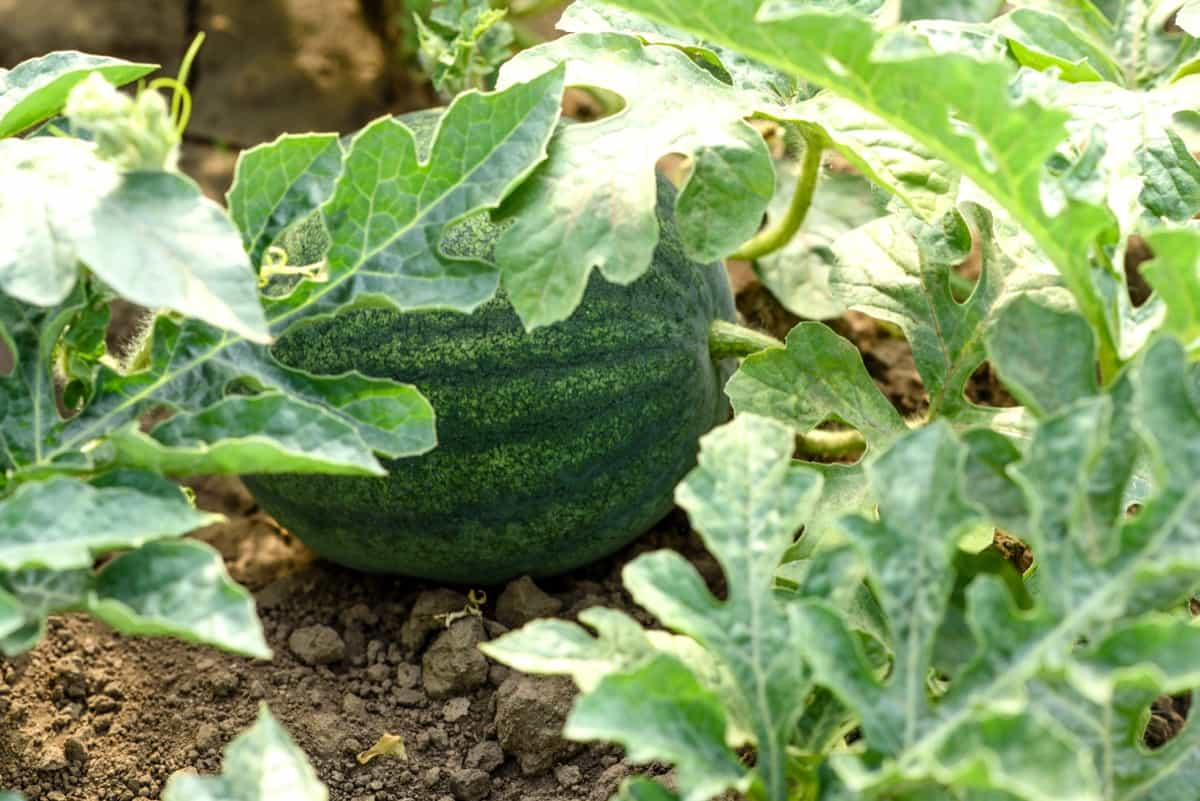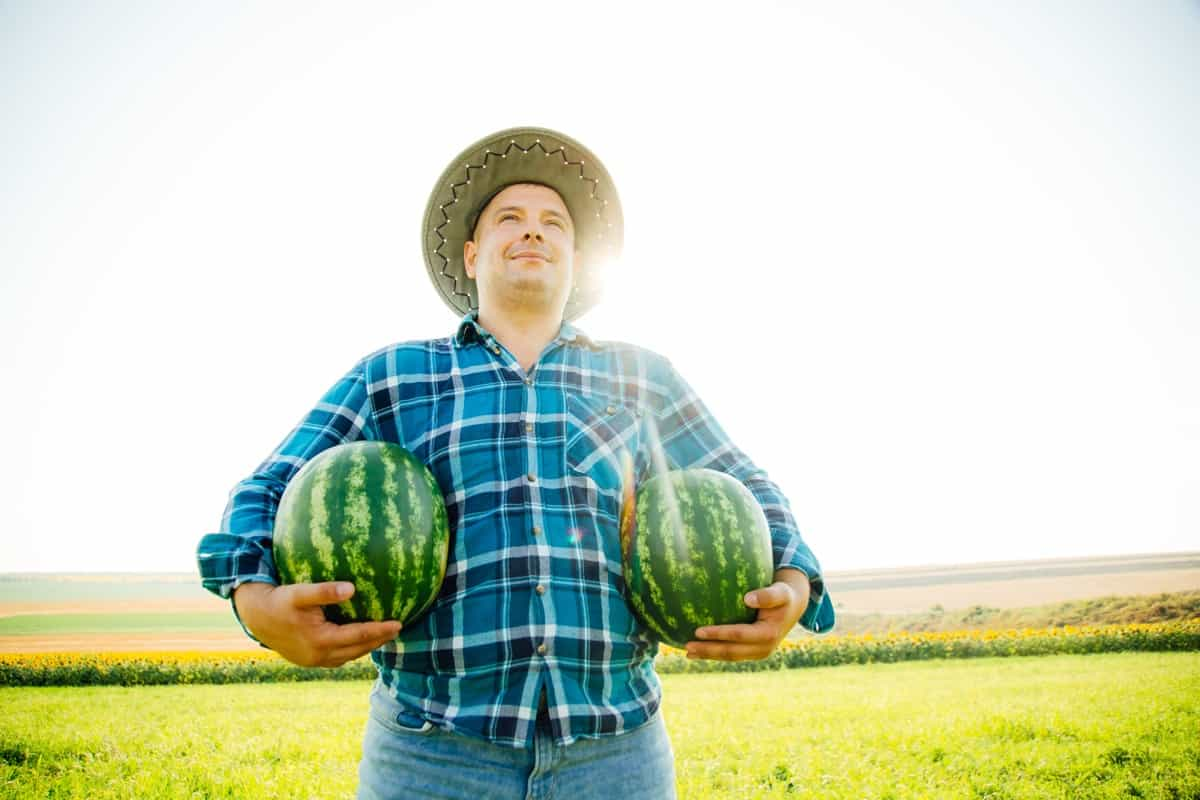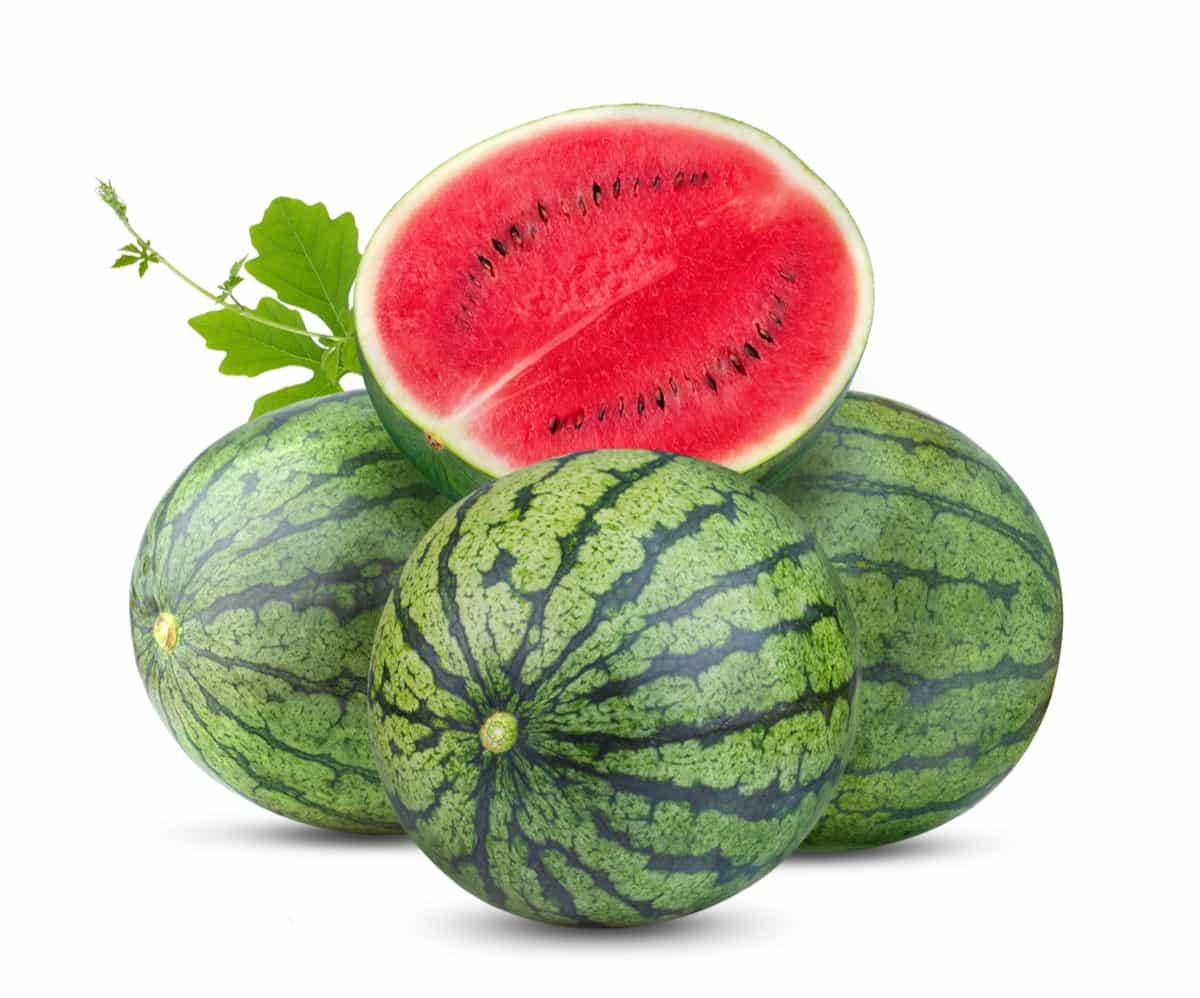Watermelon farming in California is a thriving industry, with the state being one of the top producers in the United States. California’s diverse climate, rich soil, and innovative farming practices make it an ideal location for growing watermelons. Below we learn about climate, planting, and care practices essential for successful watermelon farming in California and when to plant watermelons in California.

How to Start Watermelon Farming in California
Climate of California
California has Mediterranean-like summers and moderate, rainy winters. This climate is particularly favorable for growing watermelons, as they thrive in warm temperatures and require a long growing season to develop their characteristic sweetness and juiciness. The Central Valley, in particular, is an ideal region for watermelon farming due to its long, hot summers and fertile soil.
Temperatures of 70 degrees Fahrenheit (21 degrees Celsius) during the day and 60 degrees Fahrenheit (16 degrees Celsius) at night are ideal for the growth of watermelon plants. In California, this translates to a planting window that typically begins in late March or early April and extends through September or October. The length of the growing season in California allows for multiple harvests of watermelons throughout the summer and early fall.
Planting
Soil Preparation
Successful watermelon farming begins with proper soil preparation. Watermelons appreciate well-drained, sandy loam soils with a pH between 6.0 and 6.8. To increase soil structure and fertility, test and add compost. This will help to ensure that the plants have access to the nutrients they need for optimal growth and production.
Choosing Varieties
Selecting the appropriate watermelon variety is crucial for successful cultivation in California. Farmers should choose varieties that are well-adapted to the local climate and have proven performance in the region. Some popular watermelon varieties for California include Crimson Sweet, Sugar Baby, Charleston Gray, and Allsweet.
Planting Techniques
Two primary methods for planting watermelons in California are direct seeding and transplanting. Direct seeding means planting watermelon seeds directly into prepared soil, whereas transplanting involves beginning seeds inside and moving seedlings into the field after they have their first true leaves.
Direct seeding is the most common method used in California, as it is generally more cost-effective and easier to manage. However, transplanting can be advantageous in regions with shorter growing seasons, as it allows farmers to get a head start on the season and potentially increase yields.
Spacing and Planting Depth
Proper spacing and planting depth are essential for watermelon plant growth and fruit development. In general, watermelon seeds should be planted in hills or rows at a depth of 1 inch (2.5 cm). Hills should be 6–8 feet (1.8–2.4 meters) apart, whereas rows should be 8–12 feet (2.4–3.7 meters).
Care
Irrigation
California watermelon farmers need irrigation, particularly in the heat. For stress-free fruit production, watermelon plants need continuous soil moisture. California watermelon growers utilize drip irrigation to minimize evaporation and disease. Depending on temperature, humidity, and soil type, farmers should water watermelon plants 1–2 inches (2.5–5 cm) every week.
Fertilization
Watermelon plants require adequate nutrients for growth and fruit production. When planting, farmers should use a balanced fertiliser (10-10-10), and then apply extra nitrogen side-dressings when vine growth begins and again when fruit begins to form. It’s essential to conduct soil tests to determine the specific nutrient needs of the plants and adjust fertilizer applications accordingly. Over-fertilization can lead to excessive vegetative growth at the expense of fruit development and may also contribute to pest and disease issues.
Pest and Disease Management
Pest and disease management is critical to successful watermelon farming in California. Common pests that can affect watermelon crops include aphids, cucumber beetles, spider mites, and whiteflies. Some diseases that can impact watermelon production are powdery mildew, downy mildew, and Fusarium wilt. Integrated pest management (IPM) is a holistic approach to controlling pests and diseases in watermelon farming. This approach involves monitoring pest populations, promoting beneficial insects, and using cultural, mechanical, and biological controls before using chemical control methods.
Weed Control
Weed control is essential for maintaining healthy watermelon plants and maximizing yields. Weeds compete with watermelon plants for water, nutrients, and sunlight and can also harbor pests and diseases. Effective weed control methods include mulching, hand weeding, and mechanical cultivation tools.
In case you missed it: Seedless Watermelon Farming: A Step-By-Step Guide for Seed to Harvest

Pollination
Watermelon plants require pollination to produce fruit. In California, honeybees are the primary pollinators of watermelon crops. Farmers can encourage pollination by planting flowers and other nectar-rich plants near their watermelon fields to attract pollinators. Farmers may sometimes need to rent honeybee hives and place them in their watermelon fields to ensure adequate pollination. A general recommendation is to have one hive per acre of watermelon plants for optimal pollination.
Pruning and Training
Pruning and training watermelon plants can help improve fruit quality and yield by encouraging better air circulation and sunlight penetration. Pruning involves removing excess leaves and shoots, while training involves guiding the plant’s growth in a specific direction, typically along a trellis or support structure. To prune watermelon plants, remove any secondary vines from the primary vine’s leaf axils, leaving only one or two fruit-producing vines per plant.
Additionally, remove any dead or yellowing leaves to promote healthy growth. For training, gently guide the primary vine along a trellis or support structure as it grows. This can help keep the fruit off the ground, reducing the risk of rot and pest infestations. This method is particularly beneficial for smaller or “icebox” watermelon varieties, as the fruits are more manageable in size and weight.
Harvesting
Watermelon harvesting in California typically begins in late June or early July and continues through September or October, depending on the variety and planting date. Farmers should monitor their watermelon crops closely to determine the optimal time for harvest. Signs of ripeness include a dull, matte appearance on the fruit’s surface, a yellowish-white color on the ground spot (where the watermelon has been in contact with the soil), and a hollow, deep sound when the fruit is tapped.
In case you missed it: Black Watermelon Farming: A Step-By-Step Guide to Start from Seed to Harvest

Conclusion
Watermelon farming in California is a rewarding activity that requires careful attention to climate, planting, and care practices. By understanding and addressing the unique challenges associated with watermelon farming in the region, farmers can maximize their yields and produce high-quality, delicious watermelons in high demand nationwide.
- Feed Your Flock for Less: Top 10 Tips to Save on Chicken Feed
- Ultimate Guide to Ossabaw Island Hog: Breeding, Raising, Diet, and Care
- Hatching Answers: The Top 10 Reasons Your Chickens Aren’t Laying Eggs
- Eggs and Economics: Breaking Down the Cost of Raising Backyard Chickens
- Defend Your Greens: Proven Methods to Keep Iguanas Out of Your Garden
- Ultimate Guide to Cinnamon Queen Chicken: A Comprehensive Guide for Beginners
- Ultimate Guide to California Tan Chicken: Breeding, Raising, Diet, Egg-Production and Care
- Ultimate Guide to Marsh Daisy Chicken: Breeding, Raising, Diet, and Care
- 10 Types of Chicken Farming Businesses You Can Start for Profits